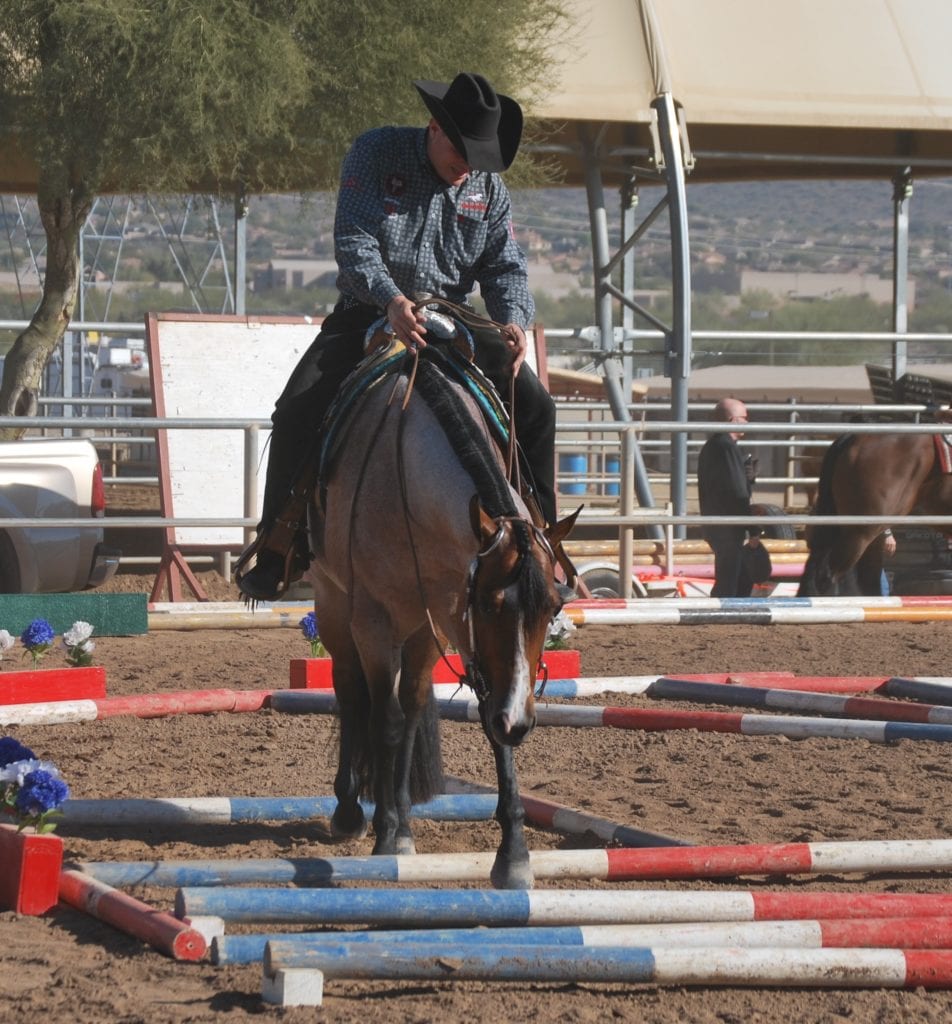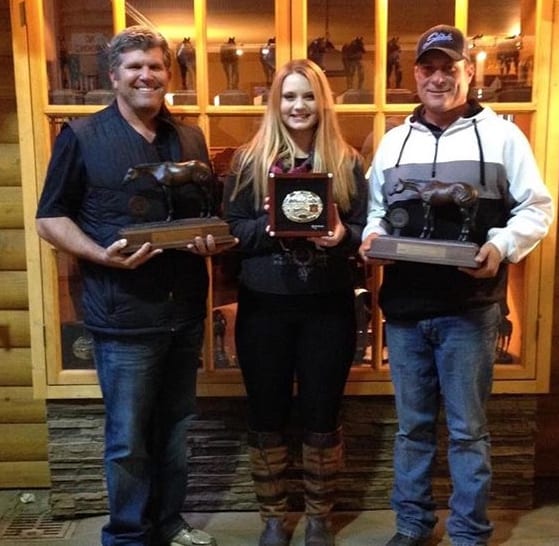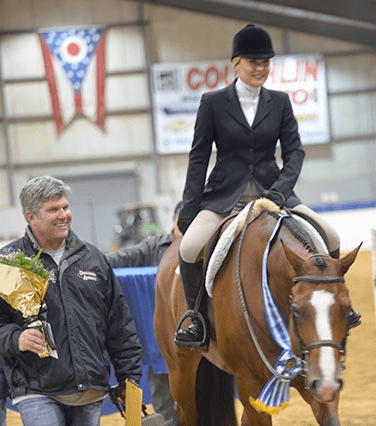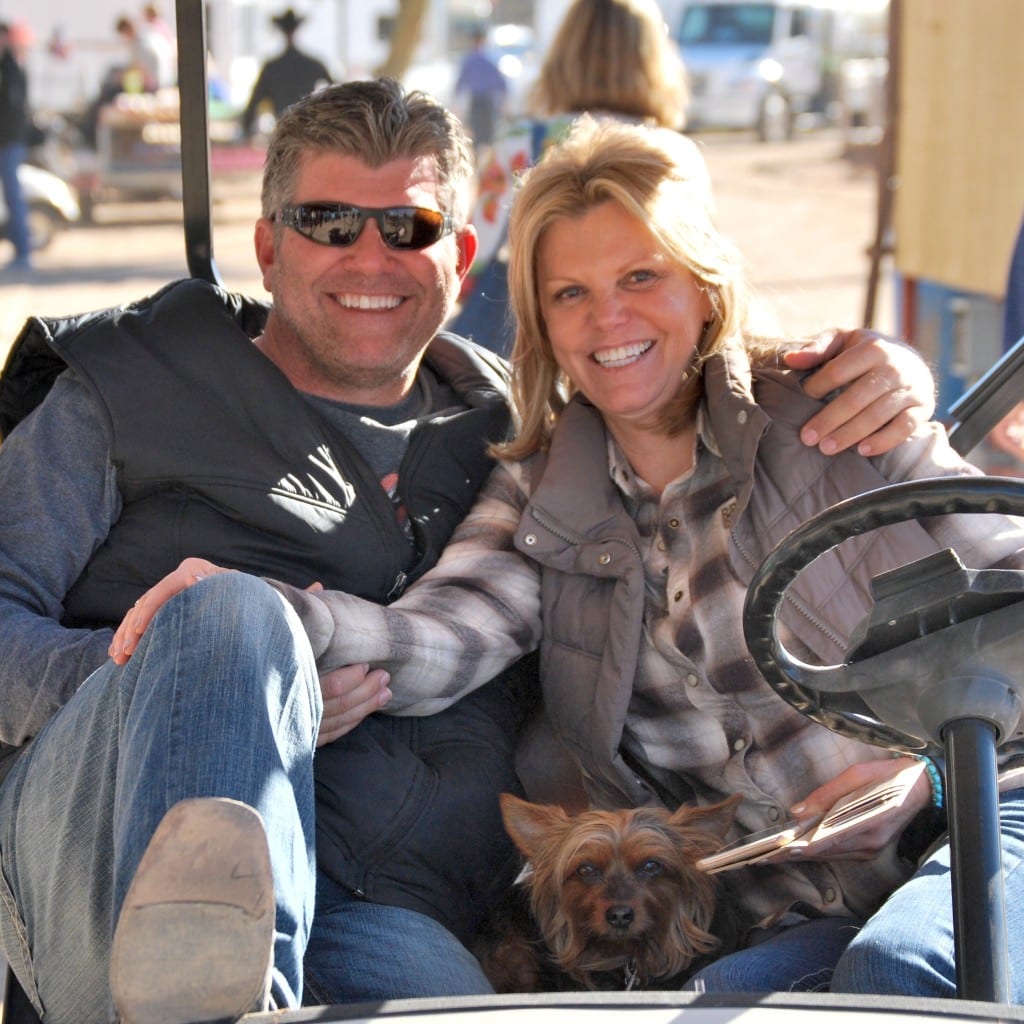GoHorseShow, in partnership with SmartPak, is pleased to continue the highly popular column, GoSmart with Charlie and Jason. Team SmartPak riders, Charlie Cole and Jason Martin, have achieved success beyond compare. Since founding Highpoint Performance Horses in 1992, they have trained over 100 World Champions and 200 All-American Quarter Horse Congress Champions.
Without question, a large part of their success lies in their ability to pick outstanding horses for their clients. Anyone who has ever been a part of the horse show world knows that owning the right horse is a huge factor in achieving one’s dreams and having a good time while doing it.
In this latest two-part series, Charlie and Jason discuss what they look for when shopping for different horses, what a buyer should do when they go look at a horse, and why it may take a while to find the “perfect” horse.
Horse Buying Basics
When it comes to buying horses, Cole and Martin said there is one mantra that should always be present in an agent’s mind.
 “No matter what client you are shopping for, be it youth, amateur, select, etc. you have to remember that your goal is to buy a horse for the client, not for yourself,” said Cole.
“No matter what client you are shopping for, be it youth, amateur, select, etc. you have to remember that your goal is to buy a horse for the client, not for yourself,” said Cole.
“Early on we were known for finding good horses,” added Martin. “And I think it’s because we have always kept this in mind.”
Another firm rule that Cole and Martin always abide by is to have patience.
“I feel that a lot of times, people settle on a horse because they are always so anxious to buy one,” said Martin. “Honestly, it can take six months to a year to find that perfect horse and a lot of looking, but we’ve never been ones to have a ‘make it work’ attitude.”
Martin added that when you are spending lots of money on a horse, you shouldn’t want or have to make it work, but your primary goal should be to make it great.
 Finally, keep the focus on the horse and don’t let a stellar (or not so stellar) show record be a huge determining factor.
Finally, keep the focus on the horse and don’t let a stellar (or not so stellar) show record be a huge determining factor.
For Cole and Martin, show records are one of the last things they consider.
“If I like the horse, I like the horse,” said Cole. “If their quality of movement is good and I like how they change leads, then that is what I base my opinion of the horse on.”
Cole did say that he may look for gaps in a horse’s show record, especially if it is a little older as a gap may indicate soundness issues, but even then, when shopping for a horse, the focus needs to be on the horse and not the show record.
The Youth Horse
When it comes to finding the perfect youth horse, Cole and Martin both said the most important thing to remember is the skill level of the youth exhibitor who will be showing the horse and the budget of the parents.
 “Ideally, buying a seasoned horse that is already a winner is what we look for when shopping for a youth horse,” said Martin. “If the budget is more strict, sometimes you have to make the horse into a winner yourself, but ultimately, the horse needs to be quiet and broke.”
“Ideally, buying a seasoned horse that is already a winner is what we look for when shopping for a youth horse,” said Martin. “If the budget is more strict, sometimes you have to make the horse into a winner yourself, but ultimately, the horse needs to be quiet and broke.”
“For 13 & Under exhibitors, a horse that knows multiple events is desirable as most kids don’t know what event they want to focus on yet and want to try everything,” added Cole. “Horses like this give the rider confidence, even if it isn’t the fanciest horse, it’s important that it knows its job.”
Both Cole and Martin said when it comes to youth horses, you want the rider to be able to focus on themselves and not always worrying about what the horse is or isn’t going to do underneath them.
“You want them to be able to concentrate on developing their riding ability,” said Martin. “I am totally against young kids riding young horses. Very seldom does the adage ‘They can learn together’ work. It usually just ends up in frustration for the rider, the parents, the horse, and the trainer.”
 Even when it comes to older exhibitors (14-18), Cole and Martin stand firm that the ability of the youth is what will determine the right horse to buy, although a couple of new factors come into play.
Even when it comes to older exhibitors (14-18), Cole and Martin stand firm that the ability of the youth is what will determine the right horse to buy, although a couple of new factors come into play.
“By the time a youth gets to the 14-18 division, they have a better idea of what they want to focus on and usually they are seeking a world championship,” said Cole. “This is a crucial transition time, and often they require a horse that is more specialized and a little fancier.”
For the older exhibitors, the likelihood of buying a younger horse increases, although Cole said they still must fit the requirement of having the potential to be a winner or already be a winner.
“They need to have the ability to last three to four years and still be competitive,” he said.
Amateur and Select Horses
 For Cole and Martin, shopping for an amateur or a select amateur horse is the most fun, but for very different reasons.
For Cole and Martin, shopping for an amateur or a select amateur horse is the most fun, but for very different reasons.
For the amateur exhibitor, Cole said that they try to find, “that diamond in the rough.”
Let’s face it – young amateurs who may be in college, newly married, or are just simply not able to utilize their parents’ pocketbooks anymore, have a bit tighter budget and sometimes have to get creative and more flexible with their goals with a new horse.
“We look for a younger horse, one that may be a little bit of a challenge,” he said. “For the young amateur competitor, there is no deadline. They desire and work well with project type horses. It’s something they find rewarding and they can turn around and make some real money when it comes time to sell the horse and move on to the next one.”
Martin added that the ideal age for an amateur to start with a new horse is late in the horse’s three-year-old year.
“They are usually a western pleasure or a hunter under saddle horse that you are going to add events to,” he said. “Basically, the amateur is going to make the horse, and then the select is going to buy it later.”
 Speaking of selects, when shopping for a select amateur horse, Cole said, the first thing is that the horse is safe and honest.
Speaking of selects, when shopping for a select amateur horse, Cole said, the first thing is that the horse is safe and honest.
“Selects want to enjoy the horse show experience,” he said. “They don’t want to have a lot of stress. They want a nice, solid contender.”
Martin added, “Selects pay a premium for the nice, solid horse that is seven or older. We like some age on our select horses.”
Of course, with age may come some issues but Cole said manageable issues shouldn’t be frowned upon for the select horse.
“Sometimes you get lucky, but sometimes you have to be willing to deal with a manageable issue or two,” he said.
Coming Up…
Be on the lookout for part two of this series where Charlie and Jason discuss rail and all-around horses as well as how the market has changed over the years and how that may affect your shopping experience. They will also give tips on what to do when you do go look at a horse.
Don’t miss it!









